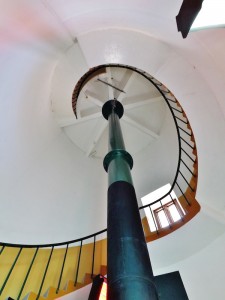By the time you read this, the very real possibility of this imposing structure tumbling into the sea may have been averted, at least for another winter. Unusually severe south-easterly storms have pushed coastal erosion on the Suffolk coast’s Orford Ness to within a few feet of the lighthouse’s foundations, and members of the Orfordness Lighthouse Trust have been working flat out to install ‘soft defences’ – bags of shingle wrapped in sausages of high-performance geo-textile bonding – to keep the sea at bay (see orfordnesslighthouse.co.uk).
The 98ft lighthouse was built in 1792 and decommissioned by Trinity House in 2013, in view of the threat from encroaching sea. It has already survived an attempt by the National Trust, which owns the Ness, to impose a policy of ‘controlled ruination’ (ie let it fall down).
The Lighthouse Trust aims to keep it standing, and open to visitors, ‘for as long as possible’. Visiting, on open days only, involves a short ferry trip and a 40-minute walk, each way, across the Ness. Dates for 2016 are still to be announced, and are dependent on the continuing stability and safety of the structure and its surrounds.
Orford Ness itself is a classic example of an ever-changing coastline. The long, shifting spit of land that separates the River Ore from the sea is quite capable of closing the river’s mouth and forcing a breakthrough higher up, where the river’s alternative name is the Alde. It’s mecca for connoisseurs of bleak, exposed seascapes (and WWII military detritus on Havergate Island). Access, by boat, is carefully restricted by the National Trust.
A good everyday alternative on the nearby mainland is the equally bleak stony beach known as Shingle Street. 
Orford village has three pubs, including the Jolly Sailor down by the harbour; an excellent fish restaurant, the Butley Orford Oysterage, and the fine Pump Street bakery. Peter Willis
From Classic Sailor: No6


